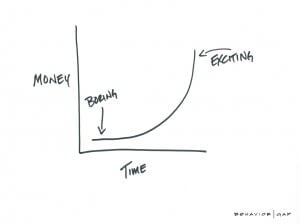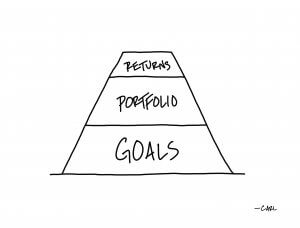
Fed Ex(cess)?
Investment ManagementMay 14, 2021
Last week, the April non-farm payroll report (aka the jobs report) was released, and it was a huge letdown. Most economists surveyed were expecting somewhere around 1 million new jobs to have been created in April. As the economy reopens and people continue to get vaccinated, most thought employment numbers would continue to see big consistent gains every month. Unfortunately, the actual number was much worse than expected (only 266,000 jobs).
We do not find a lot of value in economic predictions and projections. Economic data doesn’t go in a straight line. These reports contain a lot of noise, and this is a small sample size of one month. Still, this was a big swing and a miss. In fact, other than March of last year when forecasters couldn’t update their models in time, this was the biggest negative surprise since 1997. What did the stock market do in processing this disappointing report? It rallied to another all-time high of course. Charlie Munger once said when discussing the importance of having a sense of humor: “If you see the world accurately, it’s bound to be humorous, because it’s ridiculous.”
Why did the market react positively? Well, the explanation starts with two words you have read a lot if you visit this blog regularly: The Fed. We have talked about The Federal Reserve a lot in recent months. You can dig into our thoughts here, here, and here. Also, here. While we run the risk of being repetitive, the impact of Federal Reserve policy on markets today is impossible to overstate. Before going back to the jobs report, let’s add some brief context.
In the early stages of the pandemic there was so much uncertainty. The Fed was determined for the financial system to work smoothly and to provide plenty of liquidity (read: cash) to entities who needed it. The goal was to help whoever they could weather the Covid related economic storm. When markets were going haywire and we were all beginning to realize that we’d probably be stuck on our couches for a while, the Fed stepped in and backstopped things in a massive way. It worked, and they deserve credit for their actions. Not only did markets regain their footing, but asset prices rallied across the board in a huge way ever since. Part of the reason why is the emergency actions still being in place over a year later.
Despite the markets and economy being on much better footing, the Fed is still purchasing $80 billion of U.S. Treasury Bonds and $40 billion of mortgage bonds every month. It is projected that one third of money in circulation at the end of this year will have been printed in the last eighteen months (!). This despite record low borrowing costs for the U.S. Federal Government and a housing market that is red hot. This is on top of the Federal Government running record deficits. In short, both the Federal Reserve who oversees monetary policy, and the Federal Government who oversees fiscal policy, have floored the gas pedal of stimulus and aren’t letting up. This is like two fire trucks blasting hoses on a fire that has been well contained for a while. According to separate measurements by Bloomberg and Goldman Sachs, we are now in an environment containing the easiest financial conditions ever. Is it time for the Fed to slow down a bit? Many are beginning to discuss this more as the risk of inflation and asset bubbles seem to be increasing.

One thing we know for certain: the market loathes uncertainty. The market rallied after Friday’s bad jobs report because it reinforced the idea that the Fed would have to keep conditions easy for longer. In other words, it provided data that may encourage the continuation of the status quo. Bad news acted as good news.
At the risk of oversimplifying, think of it like this: The Fed has taken on a role as babysitter, while the markets are like a child who has become very sensitive to getting its way. Back in March (and going back to the Global Financial Crisis) the babysitter wanted to do everything they could to get the child to stop crying. The Fed has given the child plenty of things to make it feel better, and so the crying has stopped. At some point though, you have to take the candy bowl away and get back to some semblance of normal or you create a new set of problems. We don’t know when that will be yet, but the longer the easy conditions persist, the louder the initial reaction will be from the market. It is not a coincidence that the last unwind of easy Fed Policy after the Global Financial Crisis is referred to as the “Taper Tantrum”.
The Fed’s mandate from Congress is twofold: maximize unemployment and keep inflation in check. While I don’t know for sure, it would appear their focus is on using the blunt tools at their disposal to keep their foot on the gas in hopes of helping get the labor market back to where it was and wages growing. Since we haven’t seen sustained inflation in a long time, they are okay with letting the economic reopening play out before scaling things back to limit it and believe any inflation will be “transitory”. In English, rather than Fed jargon, this means they think it will be short-term. There are a lot of risks to this approach. In an economy where 70% of gross domestic product is based on the consumer, rising prices can hurt confidence and spending. Right now, the Fed has said it will stand pat on its approach for the foreseeable future. Will inflation or other factors speed up their timeline?
The Fed is full of some of some of the smartest economic minds in the world. Surely they are studying the risks of this approach at every angle and know much more than I do and have laid out here. Still, one cannot ignore the fact that policy on this scale has never been tried before. With that comes risks that haven’t existed before. This makes investors uncomfortable because there aren’t easy historical comparisons or clean narratives to lean on. Regardless of the environment we will see in the months and years ahead, it is important to take all of these factors into account when building your portfolio. Being thoughtful not only on how much risk you are taking, but where you are taking it is more important than ever. Investors may have to reconsider long held assumptions in a world where many things that were “unprecedented” just a year ago have now become the norm.
Citations
Points of Return, John Authers- Bloomberg, May 11, 2021
Dow, S&P 500 both log new records despite weak April jobs report, Mark Decambre- Market Watch, May 7, 2021
The Fed Should Get Out of the Mortgage Market, Brian Chappatta- Bloomberg, May 11, 2021
Taper Tantrum 2.0 any day now, Josh Brown- The Reformed Broker, May 6, 2021
Fed officials sift through tea leaves of weak U.S. jobs report, Howard Schneider Ann Saphir- Reuters, May 11, 2021
In Unprecedented Times, Don’t Rely on (Obvious) Precedent, Rick Rieder- BlackRock, April 6, 2021


